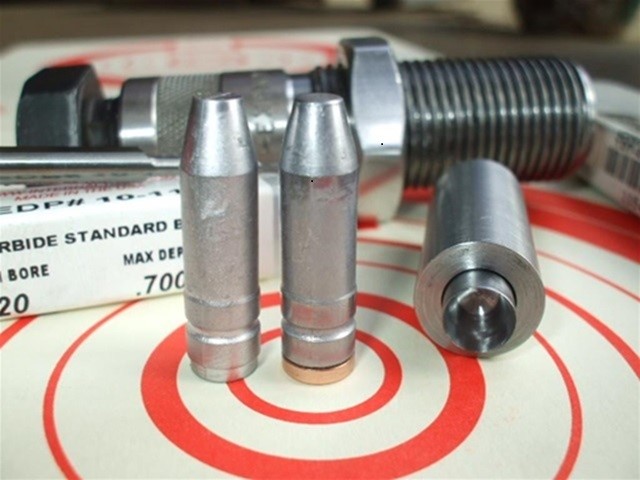Wm Cook
posted this
08 November 2023
pick a temperature where you're throwing good bullets and work with it. Measuring mold temperature, worrying about a couple of 10ths, and all the other things people get wrapped up worrying about is like asking how many angels can dance on the head of a pin
Keith you're probably right about bumping. But I'm a few lessons short of getting there. Pat, Bud you are right about nit picking nuances that doesn't mean diddly. In the case of the relationship of mold temp to nose diameter I wasn't looking to improve accuracy as I was to understand bullet to bore fit. I'm new to this but never saw anything that showed that relationship.
Two years ago what I knew about freebore diameter, leade, bore diameter, bullet to bore fit could have fit in a thimble. I had been casting for decades but never even considered cast benchrest accuracy. Rifles shot as they shot and I left it at that.
In jacketed benchrest all we did was have one of a dozen or so smiths that were dedicated to jacketed benchrest and have them chamber up a couple, three barrels at a time. Then we'd go to the shelf and keep shooting the same jacketed custom bullets and the same lot of powder we'd been shooting for the past half dozen barrels. All we adjusted was powder charge and olgive to case base. Other than finding jam depth and then backing off it a few thousands at a time bullet to bore fit wasn't part of my world.
A year ago February I got a big boost from Jim S about casting bullets for match accuracy. At the time started using a clock with a sweep second hand so that I could get a proper cadence. It helped more than I could ever thank him for. That led to figuring out why bullets cast on Monday were a consistent +/- .3 grains but on Tuesday it may have crept up a few grains but still held a consistent +/- .3 grains. That led me to finding out that if I held the mold temp consistent during a run, say 400 degrees, I could drop bullets close to the same weight Monday or Tuesday. Will it help accuracy? Probably not, but I have a lot of knowledge gaps that I have to fill. I am not recommending new cast accuracy shooters go to this length because it is not necessary. I did what I did because I had to prove to myself what effects the bullet's shape and weight.
Not that any of this matters because if you separate your casting sessions and shoot groups from the batch that was cast none of my effort was worth it. And in fact if you shot bullets from the same casting lot that were +/- .1g vs +/-.4g I have serious doubts that it would matter a hoot. John doesn't sort and Larry doesn't need to sort because their skill level with casting has been honed for decades. I'm new so I have to put in the time to learn some of these things for myself.
All this work did teach me way more about bullet to bore fit than I knew a year ago. After a lot of trial and error I think I have bullet to freebore dimension figured out. Same with gas check to case neck. Bullet to bore could be corrected as Keith described but I'm not equipped to get to where he's at at this time.
I'm about half way to where I understand bullet to bore fit for bore rider type bullets. All I can do is give it a good guess. And that's if you can feel the drag on the nose of the bullet as you chamber but are still able to easily extract a loaded round you're have a decent fit that will not hurt you. Conversely if you feel no drag on the lands the small nose diameter may or may not effect accuracy. If you chamber a round and before the bolt comes within .25" and you feel a drag and are then unable to extract the round easily you are too tight, pressure builds and you shoot patterns. Paul's article in FS 268 helped me here.
If you combine that with a seal on the front driving band into the freebore you have the basics fore starting the bullet off in the right direction.
I can feel the difference in how a loaded round chambers in my rig with an undersized nose. But I don't think that +/- .0003 would make any difference in accuracy. Its like walking down a hall with the lights off. If you don't brush against the side once in a while you don't know how much clearance you have on either side.
Once you've developed consistent practices for casting consistent weights and consistent dimension (about the same thing) you can move on to other lessons. You guys must think I'm hopeless. I appreciate your patience. Thanks for the help. Bill.
Note: Regarding SR .308 brass. My chronograph battery went dead today before I got to far on the .308 Winchester SR vs LR brass. But I did get a couple of 5 shot strings comparing SR to LR using IMR4227 and a 206 grain bullet and they ran 1720 vs 1723 and SD of 8.7 and 8.8.
A “Measured Response” is as effective as tongue lashing a stuck door.



















